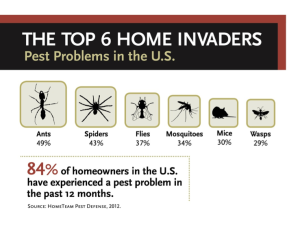











Whether branding your business or yourself – here are the top 10 things we believe most about what drives success. Everything you do creates an image and winning companies do everything they can to manage the images and perceptions being developed about them. This is branding. Branding is not about where you are today but …
Whether branding your business or yourself – here are the top 10 things we believe most about what drives success.
As president-elect of PRSA Dallas, I was excited to kick off 2014 with a panel of distinguished chief communications officers to discuss leadership lessons. The three panelists have great experience working with and for the C-Suite at top companies including American Airlines, Dr. Pepper Snapple Group, Easton-Bell Sports, Energy Future Holdings, Kimberly-Clark, RadioShack, and Zale. I …
As president-elect of PRSA Dallas, I was excited to kick off 2014 with a panel of distinguished chief communications officers to discuss leadership lessons. The three panelists have great experience working with and for the C-Suite at top companies including American Airlines, Dr. Pepper Snapple Group, Easton-Bell Sports, Energy Future Holdings, Kimberly-Clark, RadioShack, and Zale. I was fortunate to serve as moderator for the discussion and wanted to share my notes as they provide such a rich perspective on upper management’s thinking and approach.
Tina Barry’s best advice she received:
Lisa Singleton’s top learnings from crisis situations:
Laura Moore’s top “ah-ha” moments:
Some of my top learnings:
As spring approaches, more Americans take part in their favorite outdoor sports and activities. However, many are not taking easy steps to protect their eyes. In fact, almost half are not wearing sunglasses, which can lead to serious eye problems, including macular degeneration, sports injuries and even some cancers. According to a national survey completed …
As spring approaches, more Americans take part in their favorite outdoor sports and activities. However, many are not taking easy steps to protect their eyes. In fact, almost half are not wearing sunglasses, which can lead to serious eye problems, including macular degeneration, sports injuries and even some cancers.
According to a national survey completed by N3L, while 85 percent of Americans feel eye protection is a major component of their overall good health, less than two thirds are wearing eye protection consistently while outdoors, and only about a third of those age 18-24 do so.
The survey also found that one in 10 American adults has experienced an eye injury while participating in outdoor sports and activities. Men are twice as likely to have an eye injury than women. April is “Sports Eye Safety Month” and, according to the American Academy of Ophthalmology (AAO), nearly 90 percent of sports eye injuries can be prevented.
Most people would never go out in the sun for an extended period of time without sunscreen and don’t realize that their eyes need that same kind of UV protection. Sunglasses are the best way to prevent serious damage. The majority of those surveyed report worrying about their eye health, but nearly one in four do not know that sun exposure can cause eye cancer or cataracts.
Outdoor Activities and Use of Sunglasses
Survey respondents considered themselves to be active, with 76 percent walking for fitness, followed by participation in water sports (37%), hiking (35%), camping (33%), outdoor team sports (27%), and cycling (26%). Participation in outdoor activities was similar to a year ago, showing little impact due to the economy.
Of concern in some key sports categories, the survey found that more than 40 percent of runners and 35 percent of water sports participants do not consistently wear sunglasses during these activities, exposing their eyes to potential damage. Only 50 percent of men make it a priority to have the right sunglasses for their sport and for women, it’s even less (33%).
Why don’t more Americans Wear Sunglasses During Sports?
Clarity and fit and are the main reasons why many people don’t wear sunglasses during their sport. Many people also have no idea there are frames and lenses out there that will enhance their outdoor experience while protecting their eyes. Advancements in sunglass technology have corrected these concerns, and there are now many sunglasses to choose from that don’t slip, fog or impair vision outdoors.
Americans Feel Good in Sunglasses
Though safety and outdoor conditions are factors in choosing the right sunglasses, Americans definitely like to look and feel good as well. The survey found that 45 percent feel “confident” with their sunglasses on, and 42 percent feel “cool.” More than a third feel “sporty” or “safe,” and nearly that many feel “healthy.”
Confidence peaked in New York, where more than half feel “confident” in their sunglasses. Coolness peaked in the southwest, where 57 percent feel “cool” in their sunglasses. “Sporty” was one of the top three feelings while wearing sunglasses in the northeast, southeast, and west.
Almost a third of women feel “glamorous” in sunglasses compared to only 10 percent of men, and more women feel “classic.” Men feel more “masculine,” “serious” and “rugged.”
Many associate sunglasses with iconic sports moments, and nearly 30 percent recalled Lance Armstrong winning the Tour de France as the most notable sunglass moment in sports.
About the Survey
In 2012, N3L Optics conducted a nationwide survey of adults to better understand behaviors and beliefs relating to sunglasses. The survey examined areas such as participation in outdoor sports and activities, use of sunglasses, health knowledge, and injury rates. The subject group was made up of 1,080 respondents from across the country between the ages of 18-54 years old. All respondents had purchased at least one pair of sunglasses during the last 24 months, and had participated in an outdoor activity within the past year. Additional data is available by gender, age group and sport.
A logo is an important identity of your brand. Just like any other marketing materials, a logo needs to communicate the strategic direction a company has made regarding its brand. Without the right strategy, a logo will not reflect the values, vision, and messages of your brand. Is your logo on the mark? Below are …
A logo is an important identity of your brand. Just like any other marketing materials, a logo needs to communicate the strategic direction a company has made regarding its brand. Without the right strategy, a logo will not reflect the values, vision, and messages of your brand. Is your logo on the mark? Below are a few tips to keep in mind when developing a logo:
Simplicity
A logo should be simple and not contain too much details. It needs to communicate quickly and memorably about the company or product. Your logo doesn’t and shouldn’t say everything about your company but just a few core aspects of it, which will be determined by the brand strategy.
Productivity
A logo has many different application purposes – stationery, websites, presentations, vehicles, brochures, promotional materials, etc. A logo needs to have the ability to work in black and white as well as in different sizes without losing its quality when scaled. Different file formats and specifications of the logo should be created such as black and white, PMS (spot colors), CMYK (4-color process), and RGB in both vector and pixel formats. Fonts that are a part of the logo should be outlined therefore not requiring a user to have the font(s) installed on their computer to read the file correctly.
Sustainability
A good identity should last anywhere between 10 to 15 years. Brand recognition will take time. Make sure the logo is achieving the right brand recognition. Don’t go with a logo because it appears “trendy” or that’s what everyone else is doing. Remember the dotcom bust!
Adaptability
A logo should be flexible enough to expand if the company or product introduces additional sub groups or product lines that are under the parent brand. Be careful not to alter the original logo but rather enhance it by adding necessary text and perhaps use different colors to identify the different sub groups or product lines.
Your logo can give the right or the wrong impression. People form perceptions before they interact and experience with your brand. Hiring a creative firm for your logo development should be a top priority for your company and should not be left in the untrained hands.
Brainstorming is a good way for two or more individuals to generate ideas and thoughts quickly. When two or more gather, there will always be more ideas and the process can be quite fun. Below are some smart tips to make sure you get the most out of your smart brainstorming: There Are No Bad …
Brainstorming is a good way for two or more individuals to generate ideas and thoughts quickly. When two or more gather, there will always be more ideas and the process can be quite fun. Below are some smart tips to make sure you get the most out of your smart brainstorming:
There Are No Bad Ideas
During a brainstorm session, no ideas are bad. The purpose of a brainstorm session is to gather as many ideas and thoughts as possible. After the brainstorm session is over, you can then evaluate and talk through the ideas that were generated during the brainstorm session.
Record Everything
Write everything down on a large piece of paper or board that everyone can see. It is a good idea to have ideas and thoughts that were generated during the brainstorm session visible to everyone.
Quantity vs. Quality
The amount of ideas and thoughts is more important than the quality of ideas and thoughts.
Build on Ideas
Encourage participants to build on each other’s ideas and thoughts. One thought from someone can sometimes spark an idea in others.
Set a Time Limit
A time limit enables the participants to have a focused and productive brainstorming session. Typically, after 45 minutes, thought processes slow down and it is time to wrap it up.
Next time you face a marketing challenge at your company, try brainstorming and see what it can do for you.
A national survey by HomeTeam Pest Defense, the third largest residential pest control company in the U.S., found that 84 percent of America’s homeowners experienced a pest problem in the past 12 months from April 2012. The top pest issues for homeowners in that particular year were ants (49 percent), spiders (43 percent), flies (37 …
A national survey by HomeTeam Pest Defense, the third largest residential pest control company in the U.S., found that 84 percent of America’s homeowners experienced a pest problem in the past 12 months from April 2012. The top pest issues for homeowners in that particular year were ants (49 percent), spiders (43 percent), flies (37 percent), mosquitoes (34 percent), mice (30 percent) and wasps (29 percent).
Pests appeared earlier than usual in 2012 due to warm winter, early spring and recent heavy rains. Termite swarms were observed in Texas, Georgia and Florida, odorous house ants in the Mid-Atlantic, and scorpions in Arizona.
Additionally, HomeTeam’s national survey found that 80 percent of homeowners are concerned about pests in their home. The top pests homeowners worry about are termites, cockroaches, rats, bed bugs and mice. Termites are the greatest pest concern, worrying one in four, and 13 percent actually experienced termites in the last 12 months. Nearly one quarter (22 percent) of homeowners had experienced structural damage to their home from a pest problem.
Eighty percent of homeowners were also concerned about being exposed to bed bugs when traveling, and most (81 percent) are not confident they know how to prevent bringing bed bugs into their home.
While many homeowners (54 percent) treated pest problems on their own, two-thirds of the do-it-yourselfers were unable to resolve their problem completely. Half of homeowners (51 percent) said using a pest control service is a necessity, and working with a company that guarantees its work was very important to almost everyone (95 percent). Treatments that would not harm children and pets were a high priority for 80 percent. HomeTeam offers the following quick tips to prepare your home and prevent pest infestations:
Additional data is available from the HomeTeam Pest Defense survey related to national pest trends and the pest control habits of homeowners, as well as highlights from the four major regions of the country and several local markets. The survey also revealed interesting findings in:
Parenting/Children: Forty-five percent of parents with children age 6-17 are not confident their child knows which pests are harmful and should be avoided.
Pets: Fleas and ticks remain the top pest issues for pets. More than half (53 percent) of pet owners have ever experienced an issue with fleas.
Real Estate: Half of people (51 percent) say they don’t think about pests when house hunting, but several pests including termites, bed bugs, rodents and cockroaches are deal breakers if seen in a potential home.

About the Survey
In February 2012, HomeTeam Pest Defense conducted a nationwide survey of homeowners to uncover the current trends and beliefs related to pests and pest control. The survey examined pest issues and pest-related topics related to travel, children, pets and home buying/selling. The survey consisted of 1319 respondents across the U.S. All respondents were homeowners over the age of 18. The survey’s margin of error is +/- 5 percent at the 95 percent confidence level. QMobius and Aperio Insights provided research and analysis.
About HomeTeam
HomeTeam Pest Defense, a recognized leader in the pest management industry, is the nation’s third largest residential pest control company. The company offers pest and termite control services using traditional treatment methods and advanced products, such as the innovative Taexx® built-in pest control system. The company has 50 branch locations throughout the Mid-Atlantic, Southeast, Mid-Central, Southwest and Western states. HomeTeam is a wholly-owned subsidiary of Atlanta-based Rollins, Inc. (NYSE:ROL). You can learn more about Rollins or HomeTeam at www.rollins.com or www.pestdefense.com.
The public relations landscape may be tough to navigate as you start, but as with any journey, you can pick up directions along the way that will help you arrive to your destination. At QMobius, we believe the following advice for entering the communications job market will steer you in the right direction to launch your …
The public relations landscape may be tough to navigate as you start, but as with any journey, you can pick up directions along the way that will help you arrive to your destination. At QMobius, we believe the following advice for entering the communications job market will steer you in the right direction to launch your career.
Combine Your Intellectual Strengths
A joint degree is a great path for those who have established their interest in communications, as well as another specialization, while they’re still attending school. Bridging both industries will give you leverage and demonstrate your knowledge, even before you’re able to gain experience. Students considering this route should speak with advisors about the best route, as many schools offer concurrent or joint programs. Either way, it’s important to weigh options with a long-term perspective when choosing the direction of your education.
Internships
Internships are important because they allow you to gain practical experience that will set you apart in the job market. Not only will you acquire direct insight into what the day-to-day looks like at a particular company, but you will also work in a number of areas that may lead you to your exact interests. Find companies that have established internship programs. Typically, they are the most beneficial for students because they are shaped to offer the most diverse experiences.
Find a Mentor
It’s great to connect with somebody who you can give you professional advice about your career. Whether you are vetting different opportunities or are confronted with a problem at work, mentors can draw from past experiences to help you anticipate issues you may not be aware of. Alternatively, you can inform your mentor about new technologies or trends that they may not be as familiar with. Choose a mentor wisely and meet regularly to talk about achieving personal success.
Join a Professional Networking Organization
The Public Relations Society of America (PRSA), American Marketing Association (AMA), and International Association of Business Communicators (IABC) are all great organizations to join. Contact your local chapter, or research collegiate chapters to get involved. By becoming a member, you’ll gain opportunities for continued professional development from seasoned veterans, and education on the latest industry trends. Professional organizations also offer a platform to demonstrate leadership. Gain professional recognition among a network of other professionals to enhance career advancement opportunities.
Use the Interview to Vet Your Options
To prepare for an interview, thoroughly research the prospective company. While you may view yourself as the interviewee, the interview should be a process where you can ask question to decide if the opportunity is one you want to pursue. Some topics to discuss are training and development programs, the review process, and promotion considerations.
Be a Student For Life
Most communication professionals will tell you that being curious is one of the most important characteristics for career success. In an ever-changing industry, expanding your knowledge and constantly evolving will help you learn and adapt to new trends. Above all, it’s crucial to fully understand a client or brand, and its competitors. Asking the right questions upfront will help you create meaningful, unique solutions.
Earned media, or credible, third-party coverage is the most effective source of information for consumers from our perspective on media relations. It’s reach affects consumers along all stages of the purchase process, and across all product categories. It’s important to build meaningful relationships with media, so that they can help you communicate the organization’s goals, …
Earned media, or credible, third-party coverage is the most effective source of information for consumers from our perspective on media relations. It’s reach affects consumers along all stages of the purchase process, and across all product categories. It’s important to build meaningful relationships with media, so that they can help you communicate the organization’s goals, ideas, intent and newsworthy inventions. By cultivating a stronger relationship with the media, you are able to build a stronger relationship between your brand and the public.
QMobius believes in the following best practices for media relations.
Social media has catapulted brand communications into an exciting, ever-changing space that has redefined the industry. With the potential to influence immediate change, social media can effectively reach large audiences when done right. Brands use social media to promote brand awareness, develop brand loyalty, drive traffic to their websites, generate leads, research audiences, and so …
Social media has catapulted brand communications into an exciting, ever-changing space that has redefined the industry. With the potential to influence immediate change, social media can effectively reach large audiences when done right. Brands use social media to promote brand awareness, develop brand loyalty, drive traffic to their websites, generate leads, research audiences, and so much more. With endless opportunities, the following tips will help you uncover your social media potential.
